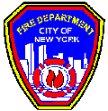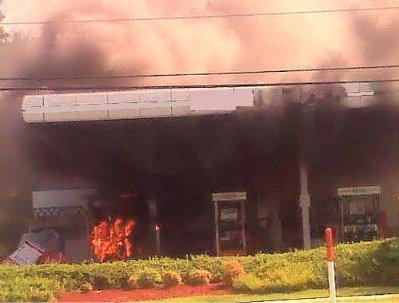In a city that never sleeps, ensuring the safety and efficiency of motor fuel-dispensing facilities is paramount. To this end, the New York City Fire Department's Bureau of Fire Prevention has outlined comprehensive guidelines through the P-15 Certificate of Fitness. This certificate, a necessity for anyone aiming to handle gas at service and fleet stations, encapsulates a myriad of critical safety, operational, and supervisory protocols. With the advent of the new test on November 21, 2011, the department has not only updated the examination process but also reinforced its commitment to upholding the highest standards of fire safety and prevention. The P-15 Test form includes detailed sections on motor fuel-dispensing facilities, encompassing automotive, marine, and those housed within buildings, alongside the critical measures for tank and tank truck management, fuel dispensing procedures, and the indispensable use of approved portable containers. Furthermore, it delves into the essential aspects of supervision, record-keeping, safety regulations, fire control measures, and the meticulous reporting of spills and discharges. Coupled with an emphasis on emergency procedures and fire extinguisher insights, the document is a testament to the intricate safety fabric that underpins New York City’s bustling gas stations. A Notice of Examination segment outlines the qualifications necessary for applicants, heralding a robust assessment framework aimed at affirming a candidate's readiness and competence in this high-stakes realm. It is a detailed blueprint designed to foster a safer, more compliant operational environment in one of the world’s most dynamic cities.
| Question | Answer |
|---|---|
| Form Name | P 15 Test Form |
| Form Length | 27 pages |
| Fillable? | No |
| Fillable fields | 0 |
| Avg. time to fill out | 6 min 45 sec |
| Other names | study material for the certificate of fitness for p 15 2019, p 15 practice test, p 15 certificate of fitness, p15 certificate of fitness |

NEW YORK CITY FIRE DEPARTMENT
BUREAU OF FIRE PREVENTION
STUDY MATERIAL FOR THE CERTIFICATE OF FITNESS FOR:
HANDLE MOTOR
AND FLEET SERVICE STATION
(The new test is available on 11/21/2011)
©10/2011 New York City Fire Department - All rights reserved
A
|
CONTENT |
|
NOTICE OF EXAMINATION |
I |
|
STUDY MATERIAL AND TEST DECRIPTION |
II |
|
FIRE STATISTICS AND FACTS |
1 |
|
PART 1. INTRODUCTION |
2 |
|
1.1 |
Permit |
2 |
1.2 |
Certificate of Fitness |
2 |
PART 2. MOTOR |
3 |
|
2.1 |
Motor Fuel Service Station |
3 |
2.1.1 |
Automotive Service Station |
3 |
2.1.2 |
Marine Service Station |
3 |
2.1.3 Service Stations Located Inside Buildings |
3 |
|
2.2 |
Tanks and Tank Trucks |
4 |
2.2.1 Transfer of motor fuel from tank truck to storage tank |
5 |
|
2.3 |
Dispensing Motor Fuel |
5 |
2.3.1 |
Approved portable containers |
7 |
PART 3. SUPERVISION, RECORDS AND REPORT |
8 |
|
3.1 |
8 |
|
3.2 |
Fleet Motor |
10 |
3.3 |
Inventory Control for Underground Tanks |
10 |
Example of the maintenance log book |
12 |
|
3.4 |
Inspections and Tests Records |
13 |
3.5 |
Reporting of Spills and Discharges |
13 |
PART 4. SAFETY REGULATIONS AND FIRE CONTROL |
14 |
|
4.1 |
Labeling and Signage |
14 |
4.1.1 Color coding and symbols of fill ports |
14 |
|
4.1.2 |
Warning signs |
15 |
4.1.3 |
17 |
|
4.2 |
Control of Ignition, Brush and Debris |
17 |
4.3 |
Emergency Procedure |
18 |
4.4 |
Fire Extinguishers |
20 |
4.4.1 Different types of fire extinguishers |
21 |
|
4.4.2 |
Fire extinguisher inspections |
22 |
4.5 |
Fire Extinguishing System |
23 |
B
|
NOTICE OF EXAMINATION |
Title: |
Examination for the Certificate of Fitness for Motor Fuel Dispensing - |
|
Service Station |
Date of Test:Written tests are conducted Monday to Friday (except legal holidays) 9:00 AM to 2:30 PM.
QUALIFICATION REQUIREMENTS
1.Applicants must be at least 18 years of age.
2.Applicants must have a reasonable understanding of the English language.
3.Applicants must present a letter of recommendation from his/her employer. The letter must be on official letterhead and must state the applicant’s full name, character, physical condition, experience, and address of premises where applicant will be employed.
4.Applicants must present two (2) forms of satisfactory identification i.e., driver’s license and passport picture ID.
APPLICATION INFORMATION
Application Fees: $25.00 for originals and $15.00 for renewals. The fee may be paid in cash, money order, or personal check payable to New York City Fire Department. The $25.00 fee must be payable by all applicants prior to taking the Certificate of Fitness test. Application forms are available at the Public Certification Unit, 1st floor, 9 MetroTech Center, Brooklyn, NY 11201.
TEST INFORMATION
Test: The test will be of the written, multiple choice type. A passing score of at least 70% is required in order to secure a Certificate of Fitness. Call (718)
I
STUDY MATERIAL AND TEST DECRIPTION
This study material contains the information you will need to prepare for the examination for the Certificate of Fitness for Dispensing Motor Fuel (Automotive Service Stations). It will not be provided to you during the test. It is critical that you read and understand this booklet to help increase your chance of passing this exam. The study material does not contain all of the information you need to know to supervise automotive service stations. It is your responsibility to become familiar with all applicable rules and regulations of the City of New York, even if they are not covered in this study material. You need to be familiar with the Fire Code Chapter 22, Chapter 34, and Fire Rule Chapter 22, Fire Rule Section
Since this Certificate is premise related, Certificate of Fitness must be registered to a given address. Multiple Certificates may be obtained for different stations.
About the Test
All questions on the Certificate of Fitness examination are of the multiple choice type with four alternative answers to each question. Only one answer is most correct for each question. If you do not answer a question, or if you mark more than one alternative your answer will be scored as incorrect. A score of 70% is required on the examination in order to qualify for the Certificate of License. Read each question carefully before marking your answer. There is no penalty for guessing.
SAMPLE QUESTIONS
1.The pumps used to transfer gas from underground tanks must be approved by the:
(A)New York Fire Department
(B)Board of Standards and Appeals
(C)Department of Buildings
(D)Department of Electricity
The correct answer is "B". You would press "B" on your computer terminal.
2. The gasoline storage tanks at a service station must be:
(A)underground only
(B)above ground only
(C)either above ground or underground
(D)easily moved in case of emergency
The correct answer is "C". ". You would press "C" on your computer terminal.
II

FIRE STATISTICS AND FACTS
According to the Fires at U.S. Service Stations report published by the Fire Analysis and Research Division of the National Fire Protection Association (NFPA) in April, 2011, an estimated 5,020 fires and explosions occurred at public service stations per year from
Fires in these occupancies represent a variety of incidents, including structure fires, vehicle fires, outdoor fires and other fires. The majority of incidents are vehicle fires (61%), but the majority of the property damage (59%), results from structure fires. In structure fires, heating equipment was the leading cause, followed by electrical distribution and lighting equipment. The top three leading items first ignited in structure fires at service stations are flammable or combustible liquids, gases, and associated piping or filter (22%); rubbish, trash, or waste (18%) and electrical cable or insulation (13%).
The leading factors contributing to the ignition of different fires:
Structure Fires:
(1)Electrical failures or malfunctions
(2)Abandoned materials
Vehicle Fires:
(1)Mechanical failures or malfunctions
(2)Electrical failure or malfunction
(3)A flammable liquid or gas being spilled Outdoor and unclassified fires:
(1)Abandoned or discarded materials or products
(2)electrical failures or malfunctions
1